Vending machines have a long history dating back to 215BC. Greek mathematician Hero created the first vending machine dispensing holy water in exchange for a coin. Now fast forward to 1880 where the more modern style vending machine was created in London dispensing postcards. From there, it didn’t take long for vending machines to pop up in the U.S. and the rest of the world.
In 1888, the Thomas Adams Gum Company introduced vending machines in New York’s subway platforms dispensing Tutti-Fruiti gum. By the early 1900s, vending machines sold everything from stamps, cigars, candy, gumballs and postcards. In the 1920’s, vending machines began dispensing sodas into cups and cigarette machines came onto the scene. By the 1960’s canned soda machines came to market. Today you can get anything from a hot meal to the latest tech gadget, rent movies and even buy live fish or fresh eggs. You can also insert bills, pay with credit cards, or scan your phone for payment all with the push of a button. The vending revolution has forever changed the retail landscape bringing convenience and immediate gratification to every user.
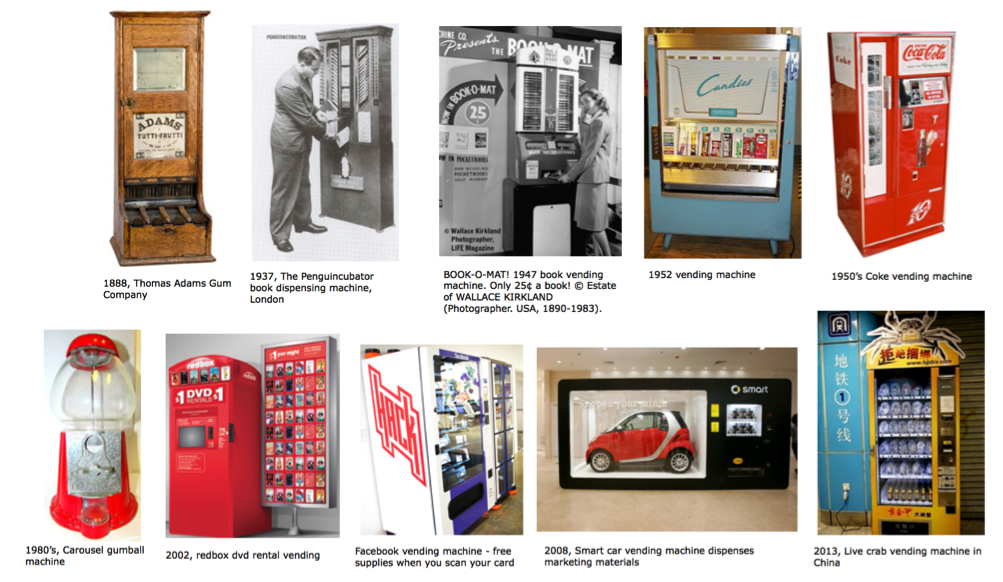
Today, vending machines have become THE trending tool in consumer engagement. Brands around the world are taking vending machines to the next level by integrating them with social media experiments that create unique experiences and build lasting relationships with the consumer.
Why are vending machines so popular with brands? Intrigue. Engage. Reward. Share. Experience. And most importantly, they are all fun.
Intrigue
Have you ever seen a crowd or a line and wonder what all the people were waiting for or watching? That’s intrigue. Fascination. Curiosity. Here is an example where the traditional vending machine became a public display of intrigue.
“The Melting Machine” by 7-Up is a vending machine made completely of ice. It was set up in Buenos Aeries, Argentina in January 2013. People would stop to see what this giant cube of ice was before realizing it was a 7-Up vending machine. The catch? You only get the can of 7-Up as the ice begins to melt away. People were intrigued! Crowds began to form around the melting machine as one by one cans of 7-Up were released from the block of ice. Fans were asked to tweet when they thought the last can would be released and winners received a free 6-pack of 7-Up. This drew more people to the location as well as kept the crowd intrigued watching the ice melt slowly away.
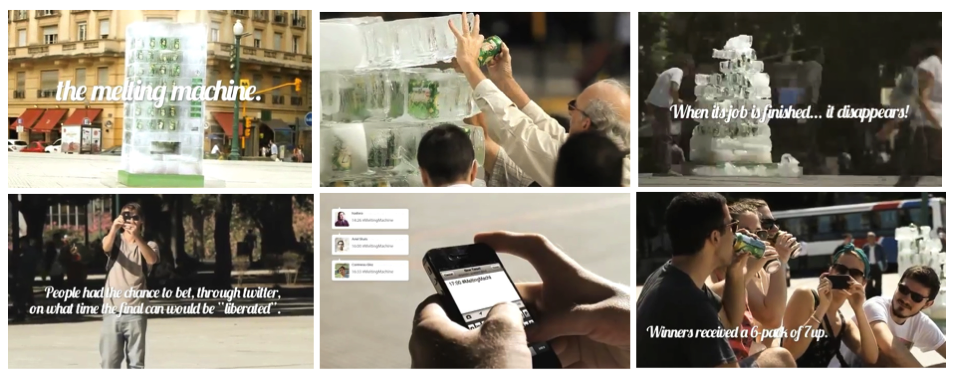
Engage
Vending machines were invented with consumer engagement in mind. Hero the Greek wasn’t just thinking about building a machine, but how the user can benefit from the design. And in today’s marketplace, engagement on and offline is the most critical part of building a relationship with the consumer.
Coca-Cola, “Hug Me”, is a vending machine that was first placed at the National University of Singapore in 2012 and is now at several locations throughout Asia. The machine reads “Hug Me” in the iconic Coca-Cola font. As part of the “Open Happiness” initiative, the vending machine dispenses a can of Coke in exchange for a hug. The goal is to engage people to hug the machine and spread the happiness. Engaging? Yes. Successful? Very! This is a very clever gesture-based marketing strategy that is now being copied by brands all around the world.

Reward
The ultimate goal in a vending is getting something out of it, a reward, even if you are paying. However, in social vending, the currency is your social activity and the rewards are just a simple thank you for spreading the word.
At the Mall of the Emirates in Dubai, Nokia has the “Nokia Gift Machine” that rewards you for checking in with Foursquare. The rewards range from candies and movie tickets to actual Nokia devices. The more you check-in, the more rewards you receive. This is real life rewarding for online activity.
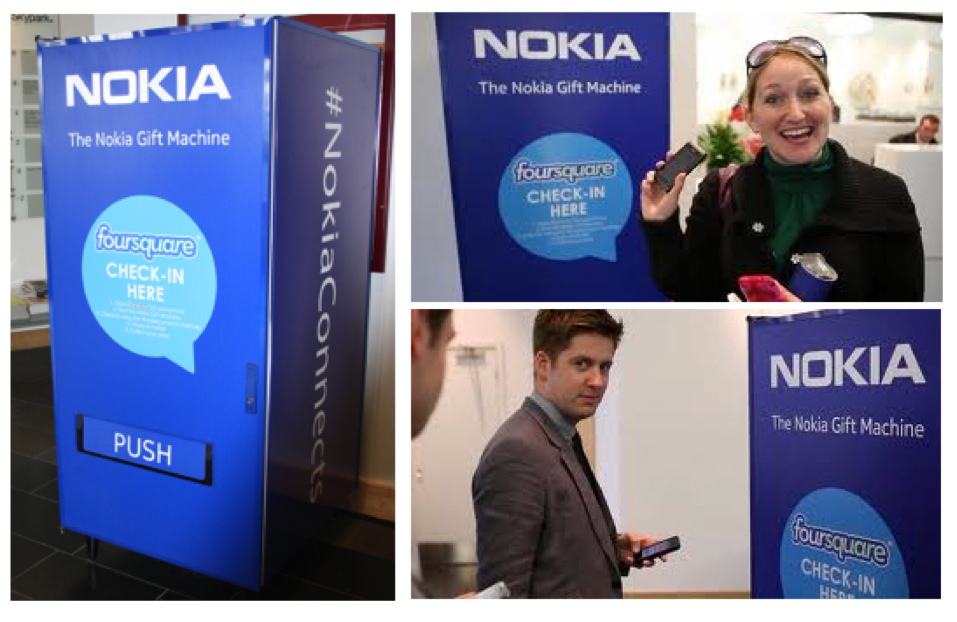
Share
Sharing is another aspect of social vending. What good is social vending if you can’t share the love, spread the word and become a part of the brand.
In 2011, PepsiCo rolled out “Social Vending System”, a state-of-the-art, fully interactive, touch-screen vending machine where you can buy, share and redeem gifts. According to PepsiCo press release, “PepsiCo’s Social Vending System enables any user to gift a friend by selecting a beverage and entering the recipient’s name, mobile number and a personalized text message. There’s also the option to further personalize the gift with a short video recorded right at the machine. The gift is delivered with a system code and instructions to redeem it at any PepsiCo Social Vending system. When the recipient redeems his or her gift, they’re given the option of either thanking the original sender with a gift of their own or paying it forward and gifting a beverage to someone else.”
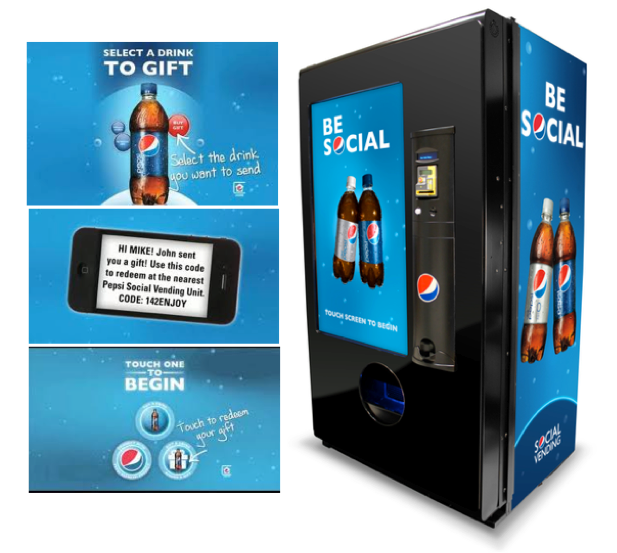
Experience
End of the day, these brands want to offer an unforgettable experience. The success is based on the social chatter on and offline. People love to talk about their experiences and if a cool and unexpected event happens, they are most likely going to talk about it, share it on Facebook and even share a photo on Instagram.
As part of the “Dare To Be Tender” campaign, Swiss chocolate brand, Milka, set up a motion detecting vending machine in Argentina. They set up the vending machine in a public space with a life size purple and white Milka cow statue nearby. The “Dare To Be Tender” Milka vending machine only dispensed chocolate bars when people held hands in front of the machine and created a chain long enough to reach from the vending machine to the cows paw. The distance between the cow and the machine would gradually get further and further apart demanding more people to connect for chocolate. Strangers came together and held hands to create the “chain of tenderness”. Now that is a sweet and unforgettable experience.
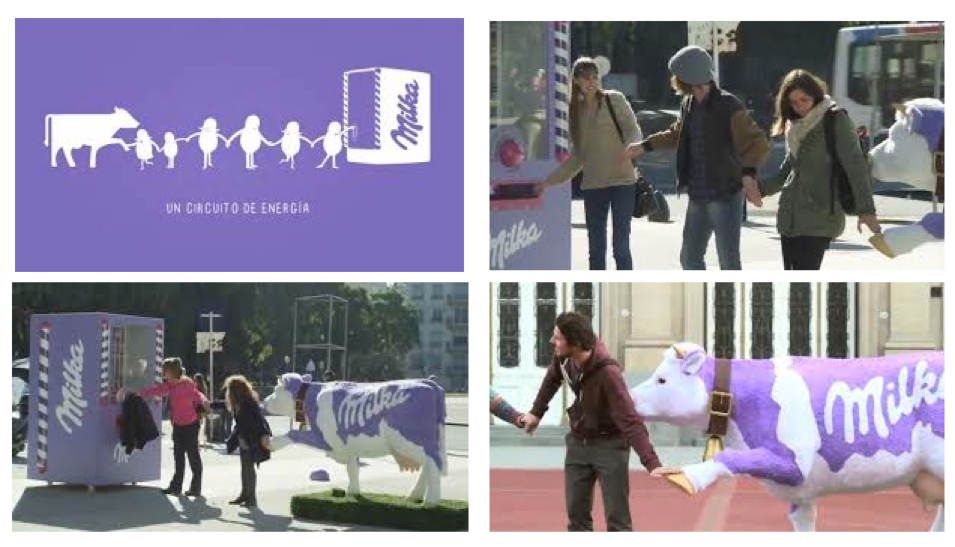
Fun
Every one of these campaigns incorporates every element of social vending, intrigue, engagement, reward and sharing. These are the elements of successful social vending. But most important, they are all fun. Everyone walks away with a smile and a story. Here are a few more examples just for fun.
BOS in South Africa has a tweet-enabled vending machine. You have to tweet to @BOS with #BOSTWEET4T to receive a free sample of BOS Ice Tea. Your twitter handle even appears on the machine in recognition for your tweet.
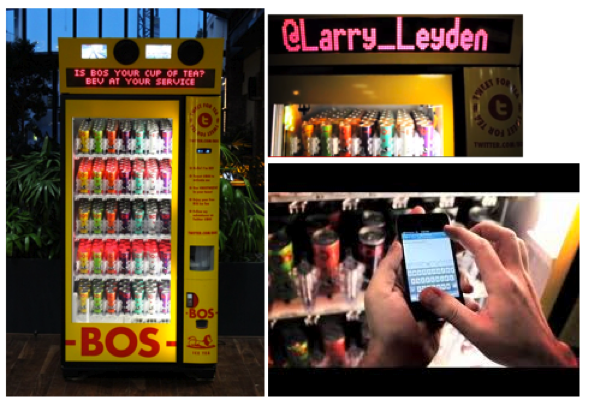
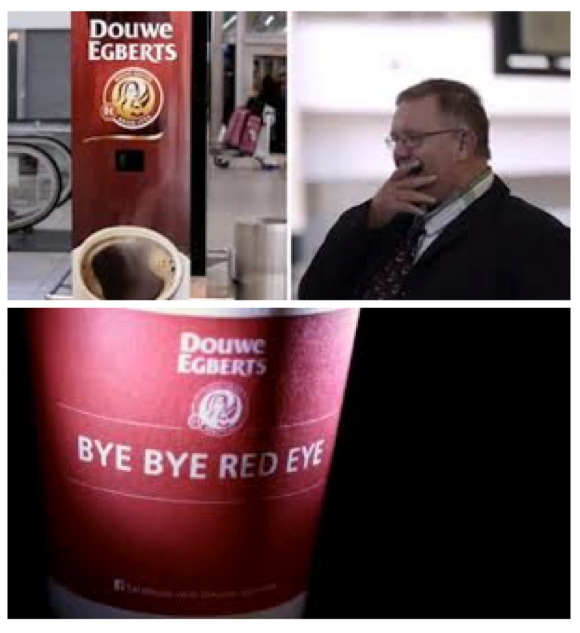
In July 2013, Douwe Egberts, a Dutch coffee brand, installed the «Bye Bye Red Eye» vending machine at the O.R. Tambo International Airport in South Africa. This gesture based facial recognition vending machine rewards you with a hot cup of coffee in exchange for a yawn. In one day, they served over 210 cups of coffee to tired, yawning travellers.
“City Cápsula” is not your average vending machine. Owned by City Bogata, a Colombian TV station, the “City Cápsula” is a vending machine video camera. It intrigues those that want their two seconds of fame but also provides a platform for people that want to send a serious message. The reward is a chance of being aired on the network.
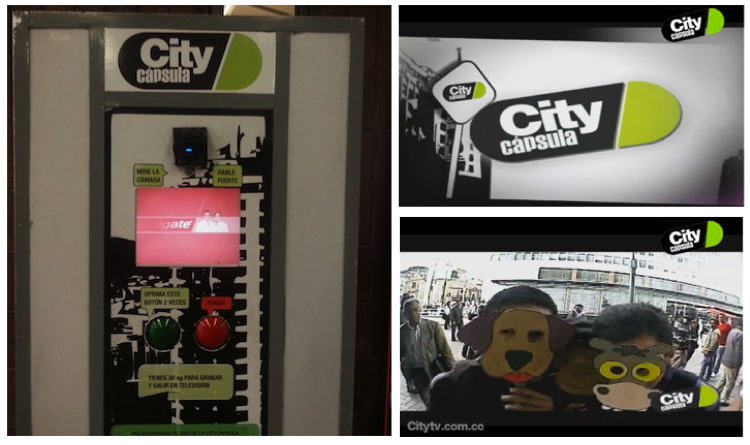
“Google Play” is a newly introduced Android gaming vending machine launching in Japan this year. If you have ever been to Japan, you know that the Japanese love vending and you can get just about anything from a vending machine. “Google Play” connects with your Android 4.0 or higher device via NFC and allows you to install free or paid games from the machine itself. The machine also dispenses a loaner Nexus 4 for you to try the games out on; the catch is, it’s a loaner and you have to return it. The size of the machine and the touchscreen is very intriguing and impressive. And for all the gaming enthusiasts, I’m sure the locations of the 3 machines that will be at select department stores will be quickly revealed via social media.
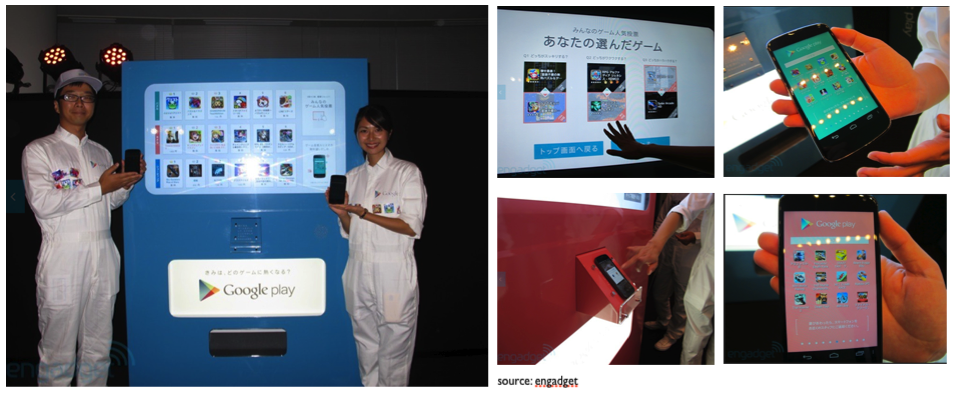
Overview
We will continue to see brands pushing the limits on how they can innovate traditional vending machines to engage consumers. What’s next? We believe that more gesture based and socially integrated vending is on the horizon. Vending machines have been around for a long time and they are not going away as a marketing tool any time soon. This is just beginning, but remember it must intrigue, engage, reward, share and be fun.
If you would like to know more about Toniq, please email us at info@toniq.com or tweet us @brandeffervesce. And check out www.toniq.com/blips for daily trends and inspiration.
About the Author
Ms. Swanson founded Toniq in 1999 after leading several design firms to world-class status with her emotions-based, visual approach to brand strategy development. At Toniq, she continues to evolve her strategic expertise by seeking new ways to connect with consumers.
Swanson’s years of trend tracking, design management and research have coalesced in a theory of “Brand Effervescence ™” an innovative approach to brand building. This image-based approach is a synthesis of cultural anthropology, consumer trends research, marketing and design, and a study of the psychology of symbolism and color.
Cheryl Swanson can be contacted at cheryl@toniq.com or 212-755-2929 x218.
